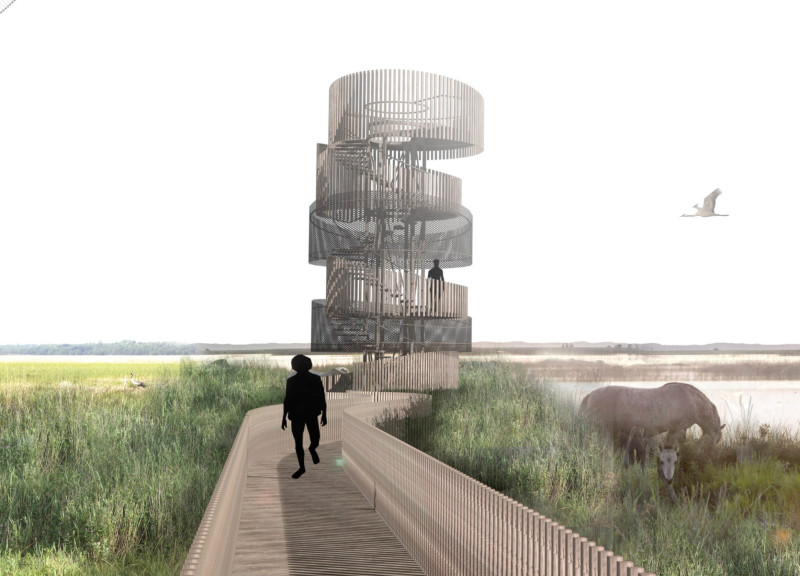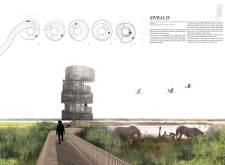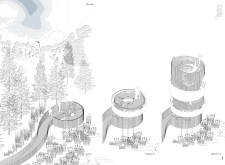5 key facts about this project
This architecture cleverly integrates multiple functions, catering to the diverse needs of those who will inhabit and interact with the space. The layout is carefully crafted to ensure fluid movement throughout, enabling a seamless transition between public and private areas. Each space is intentionally designed to fulfill specific roles, whether it be for community gathering, individual reflection, or necessary day-to-day activities. The blending of these functions reflects a comprehensive understanding of modern living, where flexibility and adaptability are paramount.
Key elements of the project include its material choices, spatial configurations, and connection to the surrounding landscape. The use of concrete as a primary material showcases durability and permanence, while its thermal properties contribute to energy efficiency. Complementing this is the strategic incorporation of glass, which allows for ample natural light to penetrate deep into the interior spaces, fostering a connection with the outdoors. Steel elements add structural integrity, particularly in larger, open spaces, facilitating a sense of expansiveness without compromising safety.
A notable feature of this architecture is the careful attention to the surrounding environment. Landscaping plays a pivotal role, acting not only as a buffer between the building and its context but also as a means to enhance the overall aesthetic experience. Native plant species are featured, reinforcing local biodiversity and minimizing maintenance needs while promoting ecological responsibility. The design also anticipates user interaction with outdoor spaces, incorporating terraces, gardens, or courtyards that serve as extensions of the indoor environment.
Unique design approaches are evident in various aspects of the project. For instance, the integration of sustainable practices, such as rainwater harvesting and passive solar design, underscores a commitment to environmental stewardship. These features not only minimize the ecological footprint but also encourage occupants to engage with the principles of sustainability in their daily lives. Moreover, architectural ideas like flexible partition systems allow for dynamic use of space, adapting to various community needs as they evolve over time.
The project demonstrates a balance between innovation and tradition, embracing the essence of local culture while employing contemporary building techniques. The architecture stands as a testament to the community it serves, harmonizing modern aesthetics with familiar forms and materials that resonate with local history and identity.
For those interested in understanding the nuances of this architectural endeavor, exploring the project presentation will provide further insights into the architectural plans, sections, and designs that shape its character. This comprehensive overview encourages a deeper appreciation of the design process and the ideas that inform the project's development. Such exploration will illuminate how this architecture not only meets immediate needs but also aspires to inspire its users and integrate into the fabric of the community.


























